
As a soil scientist, I love seeing mushrooms pop up aboveground. It’s always exciting to see the variety of mushrooms that fruit at different times of the year. But in my own research on fungi here at Holden Forests & Gardens, I rarely study mushrooms. This is because mushrooms and other sporocarps, the fungi we see aboveground, are only a short stage in the fungal life cycle. Most of a fungus’s life is spent belowground.
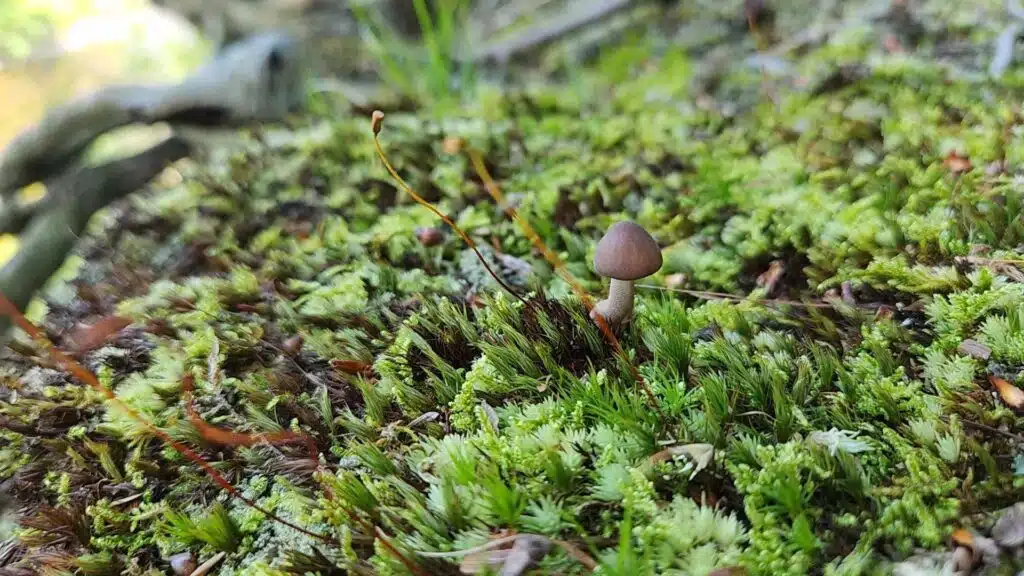
What are hyphae?
Under the soil’s surface, fungi are made of hyphae. These are fine, threadlike structures that are only 4-6 micrometers in diameter — finer than a human hair! Despite their small size, hyphae are very active belowground. Hyphae from decomposer fungi are constantly breaking down organic matter, like leaf litter or dead tree branches that fall to the forest floor. This decomposition releases nutrients into the soil, which benefits the plants, albeit indirectly.
Hyphae from another group of fungi, called mycorrhizal fungi, are a little different. Mycorrhizal fungi associate with the roots of plants, their hyphae acting as extensions. These mycorrhizal hyphae extend out from the roots and gather nutrients from the soil, some of which they bring back and give to the plant in exchange for sugars that the plant fixed during photosynthesis. This nutrient exchange is a benefit to the plant in a much more direct way.
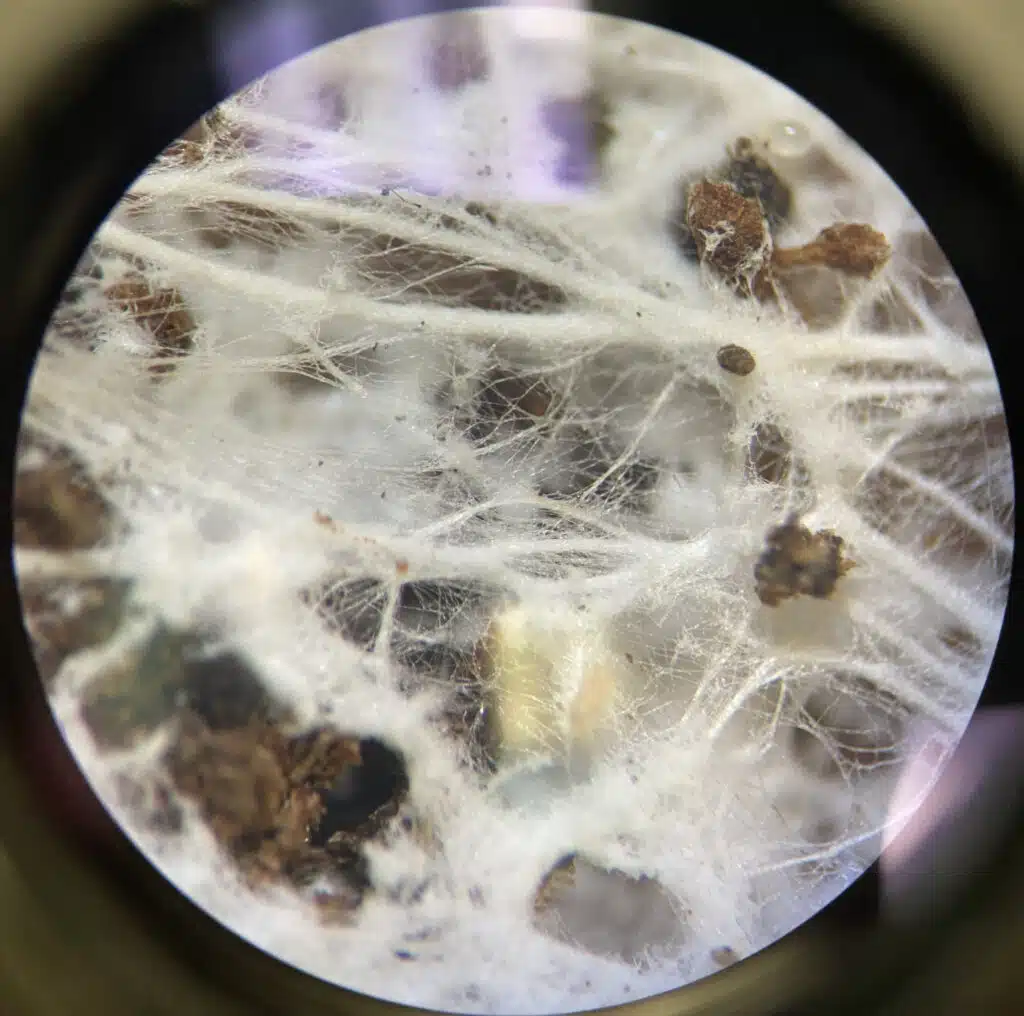

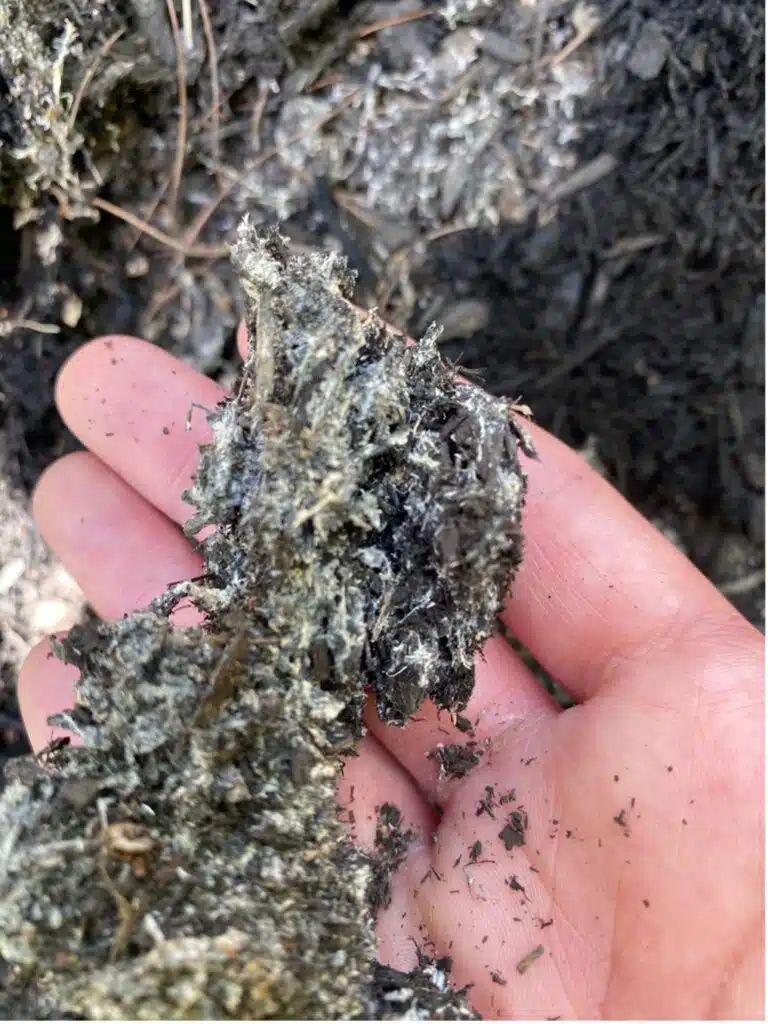
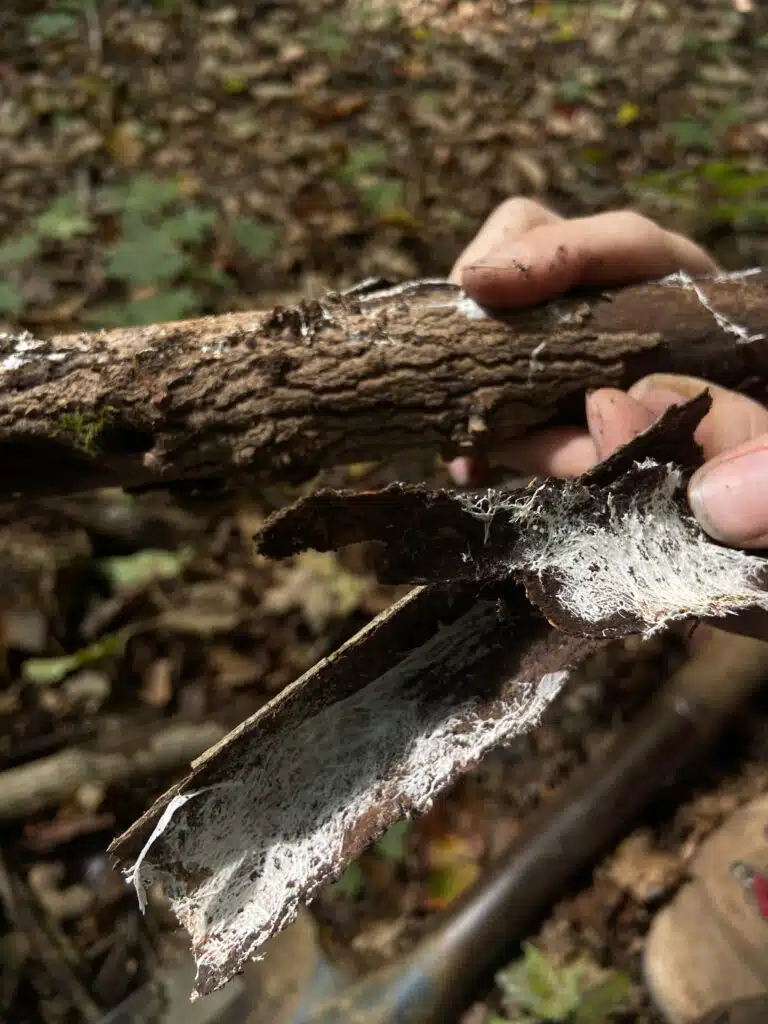
Fungi at the Holden Arboretum
Both decomposer fungi and mycorrhizal fungi are major players in forest soil, and we’ve studied both in many of our forests here at Holden. But we’ve studied them most extensively in the Stebbins Gulch natural area. One of the unique qualities of this area is the difference in forest age between the interior of the gulch and the forested areas along the edges.
A number of forested areas along the edges of Stebbins Gulch were at one time agricultural fields. Though these areas are forests now, they are only around 100 years old. This is quite young for a forest, especially in comparison to the old-growth portions of the gulch, where tree ring analysis dates the larger trees back to the 1700s!
For our research, we dig up soils from forests all across Stebbins Gulch and identify the different types of fungal hyphae with DNA sequencing. We are finding that the decomposers are not really different between old and young forests, but the mycorrhizal fungi are! We see different types and lower amounts of mycorrhizal fungi in the young forests.
This could be because forests of different ages have different tree species; we find mostly red maple and tulip poplar trees in young forests, while the older forests have more oak, beech, sugar maple, and hemlock. These different tree species could be cultivating different groups of mycorrhizal fungi.
Alternatively, it could be that the agriculture of the past created soils that even today are not ideal for mycorrhizal fungi.
Regardless of why this difference exists, we think a lot about what this means for the health of the forest today and ways we can help bring back these important plant mutualists. (If you read Mikaela Lancy’s post from last week, you learned about our restoration efforts for wildflowers in these young forests!)

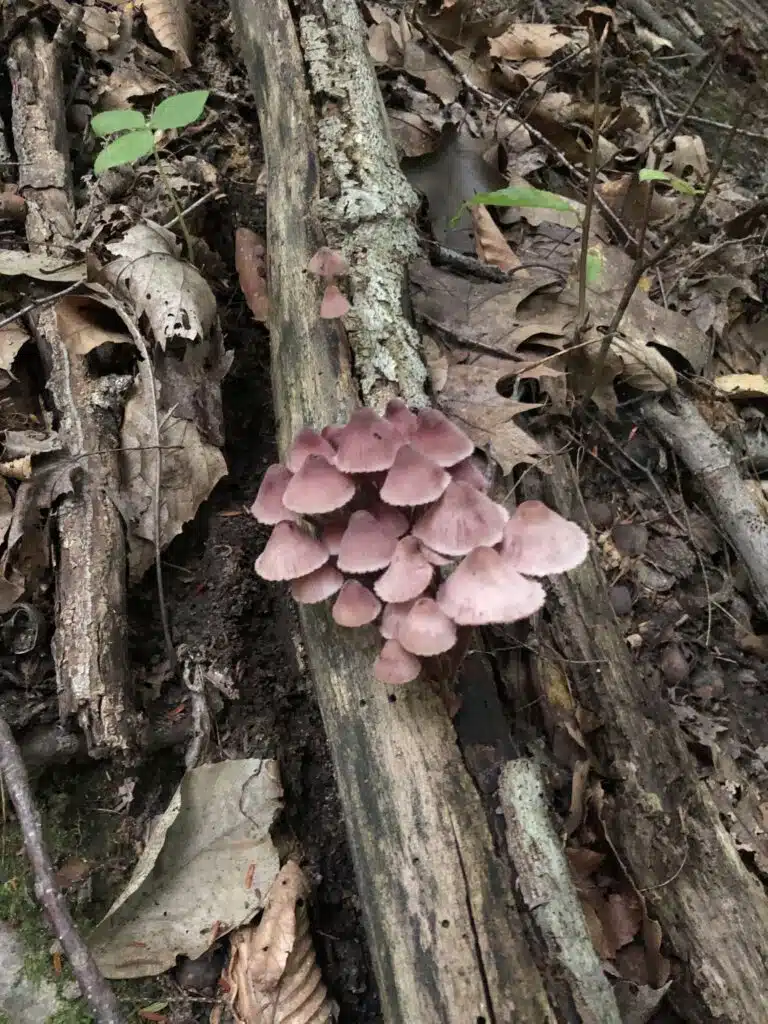

Fungi in Your Garden
Decomposers and mycorrhizal fungi are not only beneficial for forests, they are beneficial for home gardens too! One way to help them thrive is to add organic amendments to garden soils. Organic wood mulches work great in flower beds or as a coating on the soil surface around the base of trees in lawns.
Applications like these will certainly promote decomposition, and will also promote mycorrhizal establishment. This is because organic amendments create a more natural soil environment that these fungi are adapted to.
We also recommend limiting the application of chemical additives, such as fertilizers and fungicides, when possible. Adding fertilizer reduces mycorrhizal fungi, since an abudance of nutrients will limit a plant’s need for them. While fertilizer addition can provide a short term growth benefit to garden plants, mycorrhizal fungi offer benefits for much longer; and these benefits include drought and disease resistance on top of the nutrient acquisition benefits discussed above.
Fungicides directly damage fungal hyphae, as does turning soil. As such, we also recommend limiting tillage and soil turnover when possible to help keep fungal hyphae intact.
So when you see fungal hyphae in your garden at home mixed in with mulches or attached to plant roots, make sure the celebrate it in the same way you would a cool mushroom popping up from below ground! I certainly do!
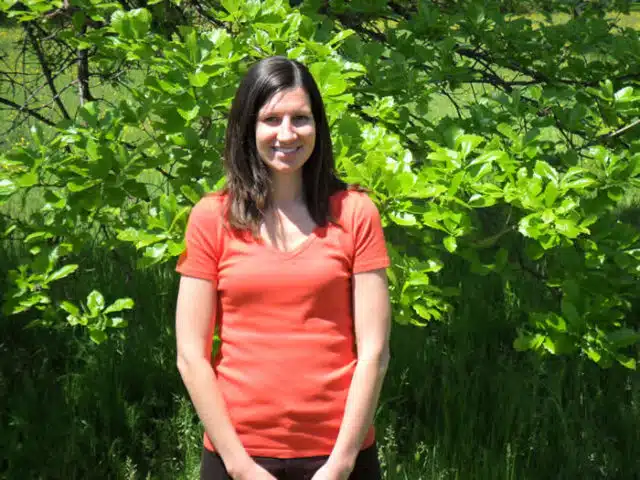
Sarah Kyker, PhD
Postdoctoral Research Associate
I am a microbial ecologist interested in the influence of human-induced and natural environmental changes on microbial communities The goal of my research is to help elucidate the importance of environmental changes to the health of a habitat or an ecosystem when these changes affect the smallest inhabitants.













